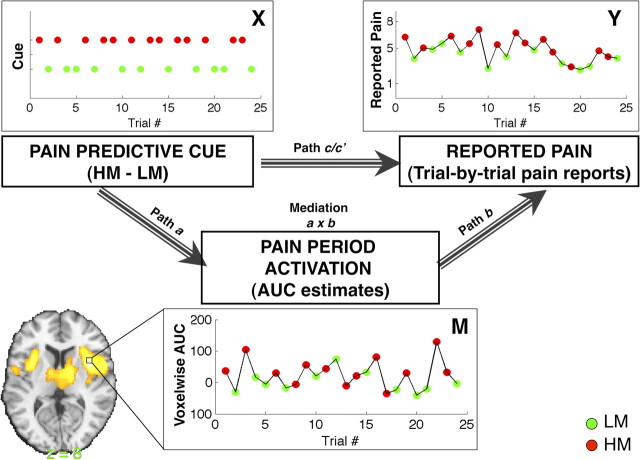Figure 2.
Mediation hypothesis framework: analysis 1. Our primary analysis examines the dynamic relationships between pain predictive cue [top left; X; green, low cue plus medium pain (LM); red, high cue plus medium pain (HM)], voxelwise pain-evoked responses (bottom, M; single trial analysis estimates of AUC, the area under the curve), and trial-by-trial pain reports (top right; Y). The four components of multilevel mediation analysis address the current study's key questions. Top, Path c/c′: Do predictive cues affect perceived pain as measured by trial-by-trial pain reports? Path c reflects the total relationship between predictive cue and reported pain on medium trials, and path c′ reflects the direct behavioral relationship, controlling for activity in the mediator—in this case a brain voxel or region. Left, Path a (“cue effects”) provides inferences on whether brain voxels are modulated by predictive cue during a constant level of noxious thermal stimulation (Fig. 3, Fig. S2, available at www.jneurosci.org as supplemental material). Right, Path b (“report-related responses”) provides inferences on whether brain activity in each voxel predicts trial-by-trial pain reports, controlling for cue (stimulus temperature was held constant) (Fig. 4, Fig. S3, available at www.jneurosci.org as supplemental material). Middle, The a × b mediation effect provides inferences on whether brain voxels explain a significant amount of the covariance between predictive cues and perceived pain (Fig. 5, Fig. S4, available at www.jneurosci.org as supplemental material).

